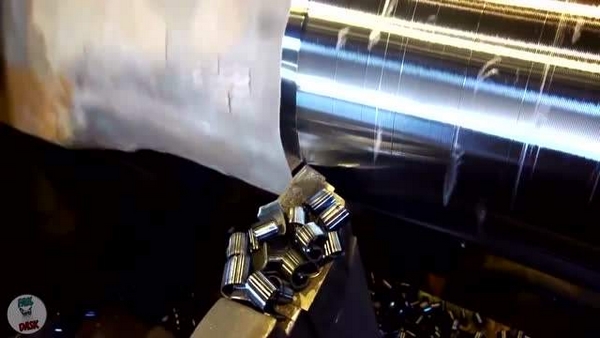As a kind of alloy titanium alloy, its classification is complex and its use is very rich, so it has become an important metal product in enterprise and household applications. For manufacturers, titanium alloy itself is more complex than other alloys such as traditional aluminium alloy, so the industrial requirements in processing are higher. These problems must be taken into account in processing and standardized operation in daily work to improve the success rate and work efficiency.

Compared with most other metal processing, titanium processing is not only more demanding, but also more restrictive. This is because the metallurgical properties and material properties of titanium alloys may have a serious impact on cutting action and material itself. However, if the appropriate tool is selected and used correctly, and the machine tool and configuration are optimized to the best state according to the requirements of titanium processing, these requirements can be fully met, and satisfactory high performance and perfect results can be obtained. Many problems encountered in traditional titanium metal processing are not inevitable, as long as the impact of titanium properties on the processing process is overcome, success can be achieved.
Various properties of titanium make it an attractive part material, but many of them also affect its machinability. Titanium has excellent strength-weight ratio, and its density is usually only 60% of that of steel. Titanium has a lower elastic coefficient than steel, so it has a harder texture and a better flexibility. The corrosion resistance of titanium is better than that of stainless steel, and its thermal conductivity is low. These properties mean that titanium metal will produce higher and more concentrated cutting force in the process of processing. It is prone to produce vibration and cause tremor in cutting; moreover, it is prone to react with cutting tool materials during cutting, which aggravates the crescent depression wear. In addition, its thermal conductivity is poor, because the heat is mainly concentrated in the cutting area, so the cutting tool for titanium must have high thermal hardness.
Stability is the key to success
Some machining workshops find it difficult to process titanium effectively, but this view does not represent the development trend of modern processing methods and tools. The difficulty is partly due to the fact that titanium metal processing is a new technology and lacks experience to draw on. In addition, difficulties are usually related to expectations and operator’s experience, especially when some people have become accustomed to the processing methods of materials such as cast iron or low alloy steel, which generally require very low processing requirements. In contrast, it seems more difficult to process titanium because the same tool and the same speed can not be used, and the tool life is different. Even compared with some stainless steels, titanium metal processing is still more difficult. Of course, we can say that different cutting speeds and feeds as well as certain preventive measures must be taken to process titanium metal. In fact, compared with most materials, titanium metal is also a kind of material that can be directly processed. As long as the titanium workpiece is stable, clamped firmly, the machine tool is selected correctly, the power is suitable, the working condition is good, and equipped with ISO 50 spindle with short tool overhang, all the problems will be solved – as long as the cutting tool is correct.
But in the actual milling process, it is not easy to meet all the requirements for titanium metal processing, because the ideal stability conditions are not always available. In addition, many titanium parts have complex shapes and may contain many thin or deep cavity, thin wall, inclined surface and thin bracket. To successfully process such parts, it is necessary to use large overhang and small diameter tools, which will affect tool stability. Potential stability problems are often more prone to occur in the processing of titanium metals.
